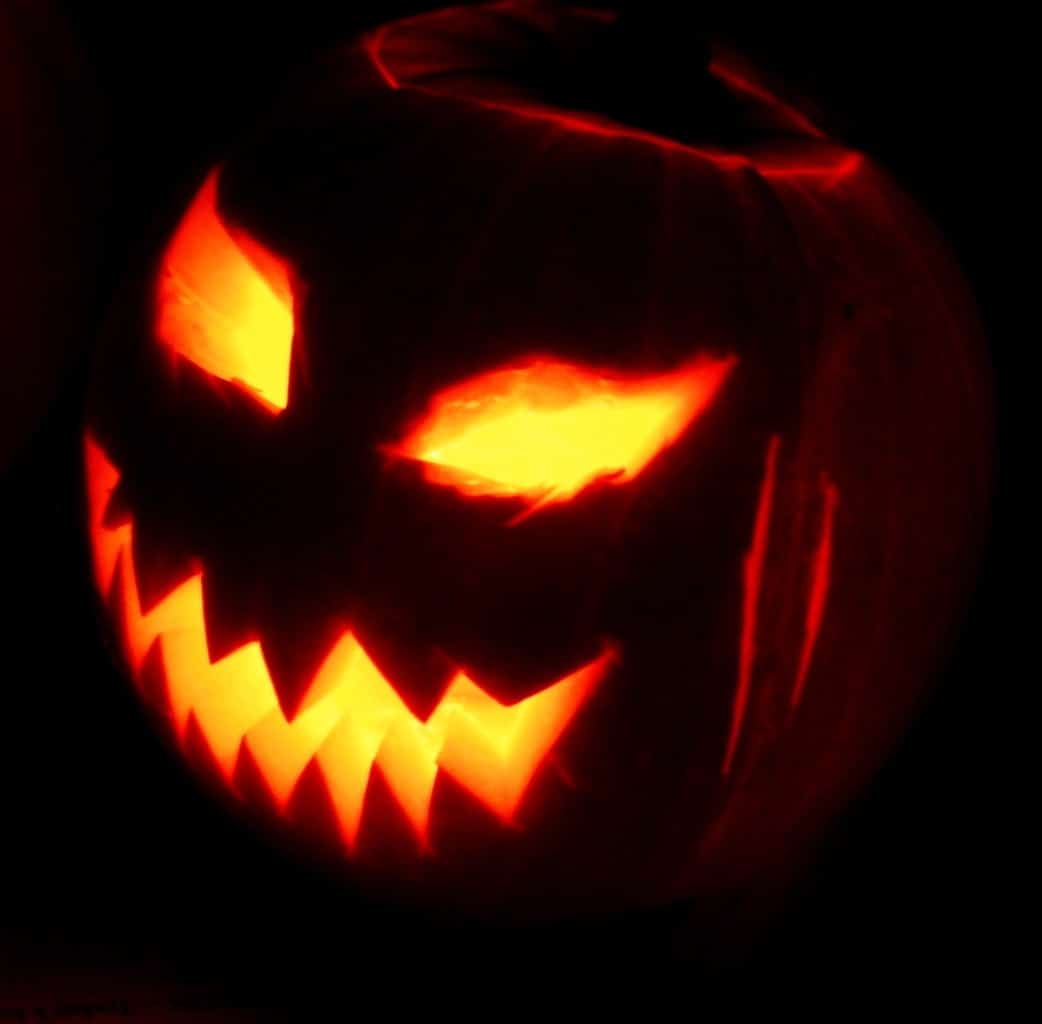Halloween marks the end of the harvest season and beginning of the darker half of the year, but its original nature is far more sacrificial and superstitious and also multicultural! Although many of the traditions that we now celebrate come from ancient Ireland, there are several cultures that have contributed to what is now celebrated as Halloween.
Celtic – Samhain Festivities
Halloween as we know it today mostly comes from a Celtic tradition and known as Samhain; a three day festival called ‘the feast of the dead’ where they would celebrate the harvest, build massive bonfires, dress up in costumes, feast, drink, and participate in divination and fortune telling.
Samhain, also known as the origin of Halloween, was a powerful and special demon of Hell and was one of the 66 Seals. He could only rise when summoned by two powerful witches through three blood sacrifices over three days, with the last sacrifice day on the final harvest, Halloween.
There are many rituals associated with Samhain today. These include dancing, feasting, taking walks, and building altars to honor ancestors. There are many parts to the altars Wiccans build. To symbolize the end of the harvest, they include apples, pumpkins, and several other fall crops. Neolithic passage tombs in Ireland are aligned with the sunrise at the time of Samhain, so this was a very important festival for the ancient inhabitants of Ireland.
Mexican – Dia De Los Muertos
This holiday actually arrives the couple of days after the traditional Samhain on November 1st and 2nd. The tradition is far more joyful and colorful than the Western Christian counterpart and focuses on humor and celebrations of the departed rather than mourning.
Traditions connected with the holiday include honoring the deceased using calaveras and aztec marigold flowers known as cempazúchitl, building home altars called ofrendas with the favorite foods and beverages of the departed, and visiting graves with these items as gifts for the deceased.
According to colonial period records, the Aztec empire was formed in A.D. 1427, only about a century before the arrival of Spanish . But the celebration that Mexicans now call Día de los Muertos almost certainly existed many centuries earlier, perhaps originating with the Toltec people of central Mexico. So the Toltec people may have been the first to celebrate this wonderful holiday. Mictecacihuatl is the “lady of the dead” and is said to watch over the bones of the dead and swallow the stars during the day.
Mictecacihuatl
The goddess of the underworld and the dead is often depicted with flayed skin and a gaping, skeletal jaw – was linked to both death and resurrection. According to one myth, Mictecacihuatl and her husband collected bones so that they might be returned to the land of the living and restored by the gods.
The Aztecs appeased these fearsome underworld gods by burying their dead with food and precious objects.
Archaeologists and historians know relatively little about the details of the month-long celebration of Mictecacihuatl, but say it likely involved burning incense, song and dance, and blood sacrifice – customary practices in many Aztec rituals.
Western Christian (Roman) – Halloween
Halloween, or All Hallows Eve, or All Saints Evening is a celebration of saints, martyrs, and the departed. One theory holds that many Halloween traditions were influenced by Celtic harvest festivals, particularly the Gaelic festival Samhain, which are believed to have pagan roots;[12][13][14][15] some go further and suggest that Samhain may have been Christianized as All Hallow’s Day, along with its eve, by the early Church.[16] Celebrated in Ireland and Scotland for centuries, Irish and Scottish migrants brought Halloween customs to North America in the 19th century, which is where most scholars believe the tradition evolved.
For some people, the Christian religious observances of All Hallows’ Eve, including attending church services and lighting candles on the graves of the dead, remain popular, though many Christians have historically abstained from meat on All Hallows’ Eve, a tradition reflected in the eating of certain vegetarian foods on this vigil day.
These three days are collectively called Allhallowtide and are a time for honoring the saints and praying for recently-departed souls who have yet to reach Heaven.
The Allhallowtide custom of baking and sharing soul cakes for all christened souls,[61] has been suggested as the origin of trick-or-treating.[62] The custom dates back at least as far as the 15th century[63] and was found in parts of England, Wales, Flanders, Bavaria and Austria.[64] Groups of poor people, often children, would go door-to-door during Allhallowtide, collecting soul cakes, in exchange for praying for the dead, especially the souls of the givers’ friends and relatives. This was called “souling”.
By 800, there is evidence that churches in Ireland[54] and Northumbria were holding a feast commemorating all saints on 1 November.
Conclusions of the Origins of Halloween
It is very likely that the traditions of Samhain and Halloween merged organically and was again reinforced when the Aztec and Central American tradition of Dia De Los Muertos was discovered and integrated into modern society. However, one cannot argue that these three days seem to be a very important time for humanity to mourn the passing of the deceased, in their own respective ways. It is fascinating that these cultures developed somewhat similar traditions. To learn more, check out my references!
Thanks for reading.
References:
- https://en.wikipedia.org/wiki/Day_of_the_Dead
- https://en.wikipedia.org/wiki/Halloween
- https://en.wikipedia.org/wiki/Samhain
- https://www.bbc.co.uk/religion/religions/paganism/holydays/samhain.shtml
- https://dayofthedead.holiday/history/
- https://theconversation.com/day-of-the-dead-from-aztec-goddess-worship-to-modern-mexican-celebration-124962
- https://www.halloweenexpress.com/samhain-and-the-connection-to-halloween/
- https://www.history.com/topics/holidays/samhain

